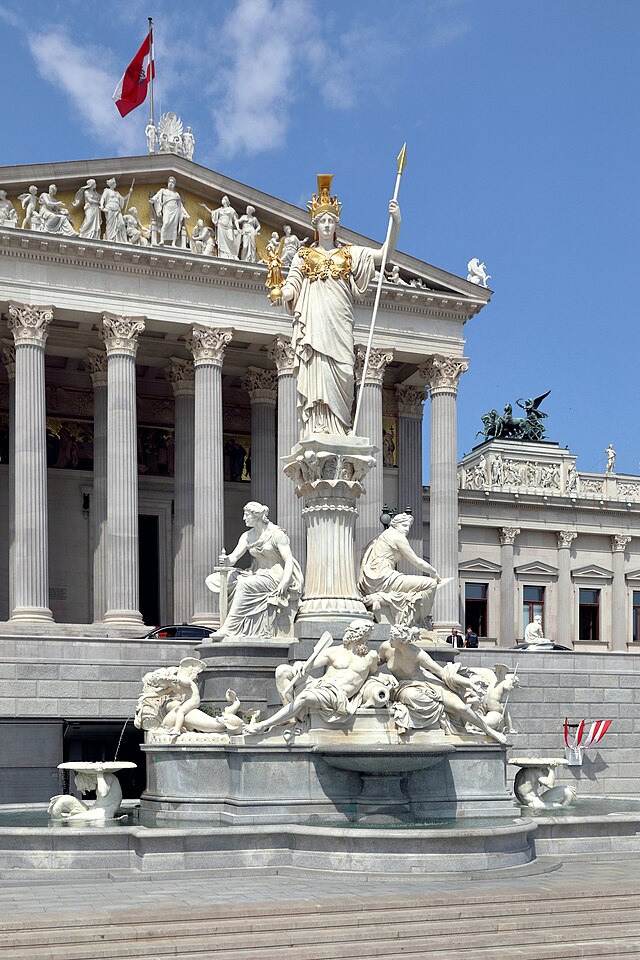
The Pantheon, with its timeless beauty and architectural magnificence, has not only stood the test of time physically but has also permeated modern culture in myriad ways. From inspiring artists to serving as a backdrop for films and igniting the imagination of writers, the Pantheon’s influence extends far beyond its physical presence in Rome. Let’s explore how this ancient wonder has left its mark on contemporary pop culture.
In Visual Arts
Modern Paintings
- The Pantheon has been a favorite subject for many modern painters, including J.M.W. Turner and Hubert Robert.
- Contemporary artists often use the Pantheon’s distinctive dome and oculus as metaphors for the connection between earth and sky.
Photography
- Countless photographers have captured the Pantheon, with images of light beams through the oculus becoming iconic.
- Instagram has popularized unique angles and perspectives of the Pantheon, making it a social media star.
Digital Art and 3D Modeling
- The Pantheon’s perfect proportions make it a popular subject for 3D modeling and virtual reality experiences.
- Digital reconstructions allow viewers to see the Pantheon as it might have looked in ancient times.
In Film and Television
Movie Appearances
- “Roman Holiday” (1953): The Pantheon features prominently in this classic film starring Audrey Hepburn.
- “Angels & Demons” (2009): While not filmed inside the actual Pantheon, a replica was created for key scenes.
Documentaries
- Numerous historical documentaries use the Pantheon to illustrate Roman engineering prowess.
- Travel shows often feature the Pantheon as a must-visit Roman landmark.
Architectural Inspiration
- The Pantheon’s design has inspired fictional buildings in science fiction films and TV shows, representing advanced alien civilizations or futuristic human societies.
In Literature
Historical Fiction
- Many novels set in ancient Rome feature the Pantheon, often as a place of political intrigue or religious significance.
- Example: “Pantheon” by David Macaulay, which tells the story of the building’s construction.
Poetry
- Poets throughout history have been inspired by the Pantheon, from Romantic poets like Percy Bysshe Shelley to modern verses celebrating its enduring beauty.
Travel Writing
- Travel writers consistently include the Pantheon in their Roman narratives, often describing the awe-inspiring moment of entering the space.
In Music and Performance
Classical Compositions
- The Pantheon’s acoustics have inspired composers to create works specifically designed for the space.
- Some modern classical pieces attempt to capture the Pantheon’s grandeur in musical form.
Music Videos
- The Pantheon has served as a backdrop for music videos across various genres, from classical to pop.
Performance Art
- Contemporary artists have used the Pantheon as a venue for performance pieces, often playing with themes of time, space, and spirituality.
In Advertising and Branding
Tourism Campaigns
- The Pantheon frequently appears in advertisements promoting Rome and Italian tourism.
- Its distinctive silhouette is often used as a shorthand for Roman culture and history.
Product Design
- The Pantheon’s dome and oculus have inspired designs for everything from watches to lamps.
- Some luxury brands have created limited edition products paying homage to the Pantheon’s architecture.
In Architecture and Design
Modern Buildings
- Numerous modern buildings draw inspiration from the Pantheon’s dome design.
- Example: The Jefferson Memorial in Washington D.C., which directly references the Pantheon’s architecture.
Interior Design
- The concept of a central oculus or skylight in modern homes often traces its lineage back to the Pantheon.
- The Pantheon’s harmonious proportions continue to influence principles of spatial design.
In Educational Media
Virtual Tours
- Advanced virtual reality tours allow people worldwide to experience the Pantheon in immersive detail.
- Educational apps use the Pantheon to teach principles of architecture, history, and engineering.
Textbooks and Educational Materials
- The Pantheon is a staple in architecture, art history, and ancient history textbooks.
- It’s often used as a case study in engineering and mathematics education to demonstrate principles of geometry and physics.
In Gaming
Historical Strategy Games
- Games set in ancient Rome often feature the Pantheon as a wonder that players can build or interact with.
- Example: The “Civilization” series, where the Pantheon can be constructed as a world wonder.
Virtual Reconstructions
- Some video games allow players to explore detailed reconstructions of ancient Rome, including an accurate representation of the Pantheon.
Social Media Influence
Instagram Hotspot
- The Pantheon is one of the most Instagrammed locations in Rome, with visitors striving to capture unique angles and lighting conditions.
Virtual Challenges
- Social media challenges related to the Pantheon (like capturing the light beam at specific times) have gone viral, bringing renewed attention to the monument.
Conclusion: A Timeless Muse
The Pantheon’s enduring presence in pop culture speaks to its timeless appeal and universal significance. From the silver screen to the pages of novels, from classical music to video games, this ancient wonder continues to inspire and captivate modern audiences in countless ways.
As you plan your visit to the Pantheon, consider how your own experience might fit into this vast tapestry of cultural references. Will you be inspired to create art, write poetry, or simply share a stunning photo on social media? How will you contribute to the ongoing dialogue between this ancient marvel and our modern world?
The Pantheon’s influence on pop culture reminds us that great architecture transcends time and speaks to something fundamental in the human experience. It connects us not only to our past but to our collective creativity and imagination. As you stand beneath its magnificent dome, you’ll be participating in a tradition of wonder and inspiration that spans millennia and continues to shape our cultural landscape today.





